For 30 years have catalytic converters been compulsory for reducing environmental pollution and converting of toxic exhaust gases into non-toxic substances. Normally, catalytic converters last as long as the car. Still, defects may occur. Driving with a defective catalytic converter is punishable, turning you into an environmental criminal. There is no need for this. We will show you how you can save your old catalytic converter and how to install a new one if necessary.
How a catalytic converter functions
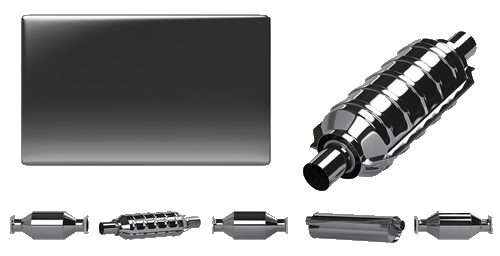 A catalytic converter removes toxic and environmentally harmful components from the exhaust by converting them into harmless or at any rate less harmful substances. Behind this is a particularly intricate process, requiring plenty of expensive and rare materials (platinum, palladium, rhodium). There are different catalytic converters, of which the so-called “unregulated” catalytic converter is still permitted in vintage cars. Additionally there are:
A catalytic converter removes toxic and environmentally harmful components from the exhaust by converting them into harmless or at any rate less harmful substances. Behind this is a particularly intricate process, requiring plenty of expensive and rare materials (platinum, palladium, rhodium). There are different catalytic converters, of which the so-called “unregulated” catalytic converter is still permitted in vintage cars. Additionally there are:
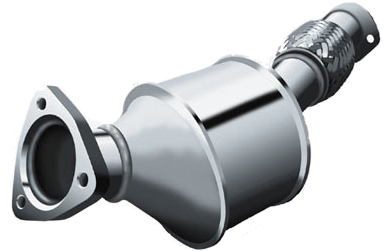 EOBD catalytic converters – catalysts with EOBD are spare parts for the older catalytic converters according to emission standard Euro-3 and Euro-4. They have on-board diagnosis or use that one of a car if any. EOBD is the abbreviation of European On-board Diagnosis as they are permanently supervised and controlled by sensors, which nowadays apply to all modern catalytic converters. EOBD catalytic converters – catalysts with EOBD are spare parts for the older catalytic converters according to emission standard Euro-3 and Euro-4. They have on-board diagnosis or use that one of a car if any. EOBD is the abbreviation of European On-board Diagnosis as they are permanently supervised and controlled by sensors, which nowadays apply to all modern catalytic converters.
|
 Oxidation catalytic converter – This “oxi-cat” is mainly used in diesel cars, using the air excess to convert carbon monoxide, carbon dioxide and hydrocarbon into carbon dioxide and water. Oxidation catalytic converter – This “oxi-cat” is mainly used in diesel cars, using the air excess to convert carbon monoxide, carbon dioxide and hydrocarbon into carbon dioxide and water.
|
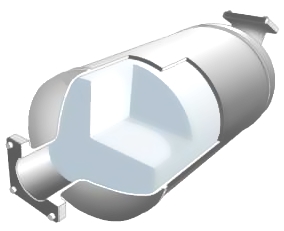 Three-way catalytic converter – is used in the petrol engine and unites three chemical processes in one single component. The hydrocarbon is converted into carbon dioxide and water, carbon monoxide into carbon dioxide and nitrogen oxide into nitrogen and oxygen. Three-way catalytic converter – is used in the petrol engine and unites three chemical processes in one single component. The hydrocarbon is converted into carbon dioxide and water, carbon monoxide into carbon dioxide and nitrogen oxide into nitrogen and oxygen.
|
 Close-coupled catalytic converter – This version is relatively new and seldom used. The manifold and the catalyst form one unit, implying that it isn’t situated at its usual location before the end silencer. The replacement can only be done in the garage. Close-coupled catalytic converter – This version is relatively new and seldom used. The manifold and the catalyst form one unit, implying that it isn’t situated at its usual location before the end silencer. The replacement can only be done in the garage. |
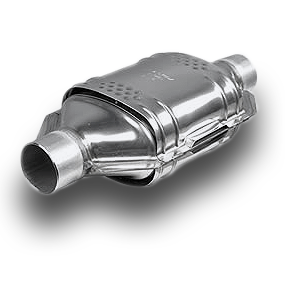
Catalytic converter • Top qualityavailable nowBuy cheaply ⇒ |
If you want to know more on the functioning principle of the catalytic converter, please read the information page of the AA or the Wikipedia article on the “catalytic converter”.
Symptoms and defects
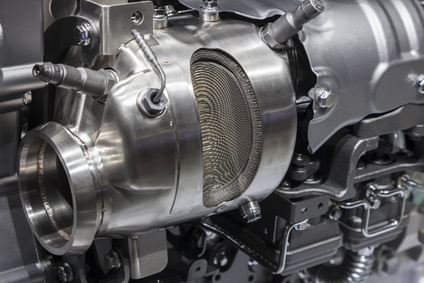 A defective catalytic converter can cause series of symptoms. Initially the engine performance will deteriorate. The engine doesn’t take gas properly and the maximum speed decreases. This doesn’t occur suddenly but gradually, and therefore most drivers fail to notice it. Another symptom is hardly ever identified by the driver: the increase of exhaust values. Only when the ignition fails partly or totally it becomes obvious. If you then wait until you can hear rattling or the engine control light switches on, it is often too late for the catalytic converter. A simple test will make clear if it still can be saved.
A defective catalytic converter can cause series of symptoms. Initially the engine performance will deteriorate. The engine doesn’t take gas properly and the maximum speed decreases. This doesn’t occur suddenly but gradually, and therefore most drivers fail to notice it. Another symptom is hardly ever identified by the driver: the increase of exhaust values. Only when the ignition fails partly or totally it becomes obvious. If you then wait until you can hear rattling or the engine control light switches on, it is often too late for the catalytic converter. A simple test will make clear if it still can be saved.
 Jack up the car or put it on the car hoist. Localise the catalytic converter (it shouldn’t be difficult) and knock against it. If you hear a metallic clinking or rattling, the delicate lamellae in the interior are broken and replacement is necessary. If no sound is heard, the catalytic converter can be cleaned. You should never drive on too long with a broken catalyst. To begin with, this constitutes a danger for the environment and sooner or later your engine will switch into emergency mode. Removing a broken catalytic converter and driving on without one is not a good idea either. This is nothing less than tax evasion, as your car no longer meets European standards. A broken catalytic converter will lead to rejection at MOT inspection, the required exhaust values no longer being met.
Jack up the car or put it on the car hoist. Localise the catalytic converter (it shouldn’t be difficult) and knock against it. If you hear a metallic clinking or rattling, the delicate lamellae in the interior are broken and replacement is necessary. If no sound is heard, the catalytic converter can be cleaned. You should never drive on too long with a broken catalyst. To begin with, this constitutes a danger for the environment and sooner or later your engine will switch into emergency mode. Removing a broken catalytic converter and driving on without one is not a good idea either. This is nothing less than tax evasion, as your car no longer meets European standards. A broken catalytic converter will lead to rejection at MOT inspection, the required exhaust values no longer being met.
Cleaning the catalytic converter – simply on the way
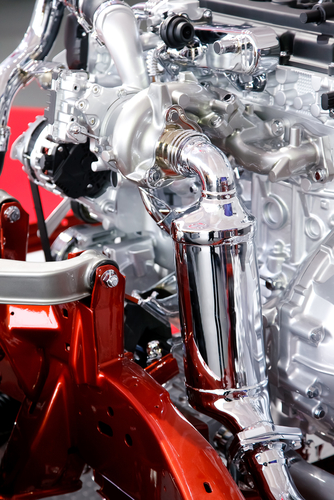 Certain additives promise a complete cleaning of the catalytic converter. These oxygen-enriched substances are not harmful, although their use is controversial, or even doubtful. Diesel cars have a special cleaner for the particulate filter which is built in the exhaust system with the catalytic converter. Here, its use seldom has a significant effect.
Certain additives promise a complete cleaning of the catalytic converter. These oxygen-enriched substances are not harmful, although their use is controversial, or even doubtful. Diesel cars have a special cleaner for the particulate filter which is built in the exhaust system with the catalytic converter. Here, its use seldom has a significant effect.
One alternative costs little time and fuel and in many cases helps “burning the catalytic converter clean”. If really tested, it reaches temperatures of several hundred degrees Celsius. It is therefore necessary to drive for a distance of at least 15 miles (and twice as far is even better) at an average to high engine speed (ca 4000 rpm) over the motorway, if possible uninterrupted and in a high gear. The effect is often noticed immediately: the faulty ignitions disappear and its original performance returns. This procedure can be repeated if the car is used mainly in urban traffic.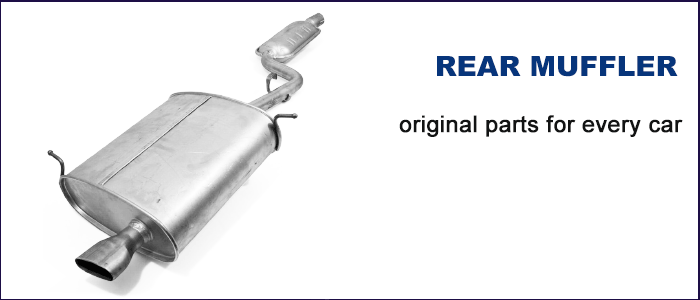
Step-by-step: replacing a catalytic converter
![]() Please note: Catalytic converters are generally screwed on, but some cases welded. It is not impossible to replace welded catalysts if you have the right tools available. This is a job for advanced DIY’ers and if you are certain about doing it yourself, you will hardly need a manual.
Please note: Catalytic converters are generally screwed on, but some cases welded. It is not impossible to replace welded catalysts if you have the right tools available. This is a job for advanced DIY’ers and if you are certain about doing it yourself, you will hardly need a manual.
The following tools are necessary:
Car hoist
or repair pit
Ring spanner or box spanner
or a hex key
Penetrating oil or rust converter
Cloth
Milk fat
or vaseline
or lubricating oil
if necessary, fitting screws
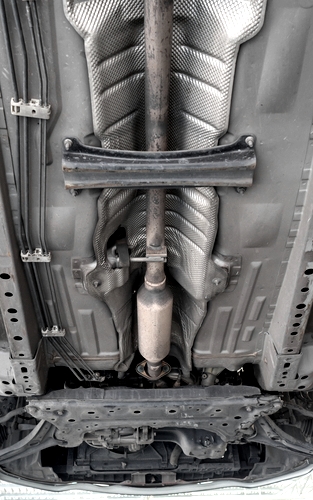 Preparation: bring the car on the hoist and lift it. Observe the exhaust and the position of the catalytic converter. Remember its installation direction and find the cables for the sensors leading to the catalytic converter. Make a sketch, if necessary. Remove the new catalytic converter from its wrapping and check the accessories. Gaskets should be supplied as well, which should be applied to the catalyst prior to installation. Rub the gaskets with milk fat or vaseline (alternatively a drop of lubricating oil) and put them in the attachment points so that they don’t fall out. Preparation: bring the car on the hoist and lift it. Observe the exhaust and the position of the catalytic converter. Remember its installation direction and find the cables for the sensors leading to the catalytic converter. Make a sketch, if necessary. Remove the new catalytic converter from its wrapping and check the accessories. Gaskets should be supplied as well, which should be applied to the catalyst prior to installation. Rub the gaskets with milk fat or vaseline (alternatively a drop of lubricating oil) and put them in the attachment points so that they don’t fall out.
|
| Step 1: Remove all plugs leading to the catalytic converter. One of them is the lambda sensor. Modern catalytic converters are equipped with several sensors measuring exhaust and temperatures. |
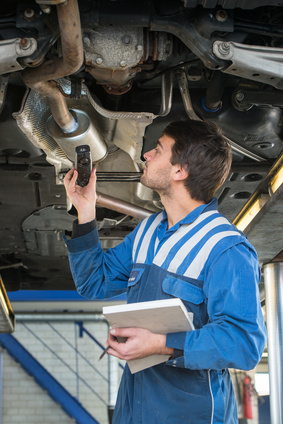 Step 2: Loosen all screws (do not remove them completely!), attaching the catalytic converter to the exhaust or the bodywork. If they are rusty or can’t be moved, apply rust converter or penetrating oil. Five minutes of allowing it to take effect should be sufficient. As a tool you need a box spanner, a hex key or both in many cases. Step 2: Loosen all screws (do not remove them completely!), attaching the catalytic converter to the exhaust or the bodywork. If they are rusty or can’t be moved, apply rust converter or penetrating oil. Five minutes of allowing it to take effect should be sufficient. As a tool you need a box spanner, a hex key or both in many cases.
|
| Step 3: Now you can remove all screws. When doing so keep the old catalytic converter in its place to avoid shearing force. If the old screws are still o.k., they can be used again. Otherwise you need to buy new ones. |
| Step 4: Remove dirt from all supporting surfaces and the tube openings with the cloth. At the location of the screws should be blank metal. In case of doubt, use a steel brush if the dirt is too persistent. For the tube connections this is of minor importance. |
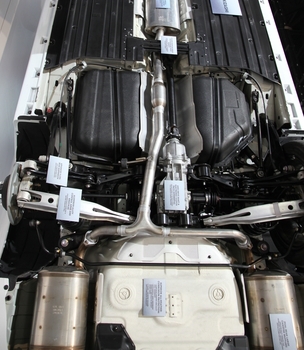 Step 5: Turn the new catalytic converter, so that the arrow for mounting direction is pointing away from the engine in the direction of the exhaust. VERY IMPORTANT! If you are uncertain or if there is no arrow, consult the installation manual or look at you sketch. Step 5: Turn the new catalytic converter, so that the arrow for mounting direction is pointing away from the engine in the direction of the exhaust. VERY IMPORTANT! If you are uncertain or if there is no arrow, consult the installation manual or look at you sketch.
|
| Step 6: Put the catalytic converter with the previously applied gaskets in the tube connections. Turn all screws lightly, and then screw them tight one by one and bit by bit until they are ultimately all completely tight. This avoids strain which could damage the catalytic converter. |
 Step 7: Put the gauges of the sensors and the lambda sensor in the matching holes and contacts. Step 7: Put the gauges of the sensors and the lambda sensor in the matching holes and contacts.
|
| Step 8: Let the car come down, get in and start the engine. Listen to the sounds, apply the gas pedal shortly and look at the instruments. If everything is normal, the replacement was a success. |
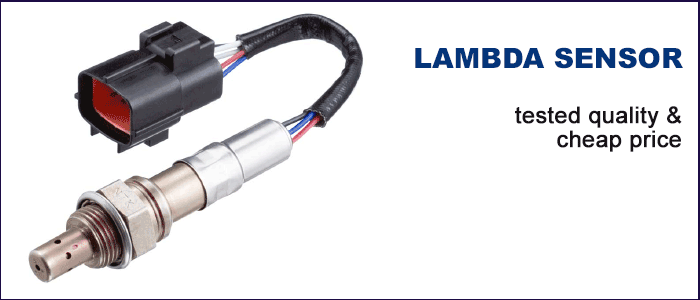
![]() Extra tip: The old catalytic converter contains several precious metals and does not belong in the regular domestic rubbish. Many recycling companies buy them for cash. Several local recyclers accept them as well, but only pay the scrappage value.
Extra tip: The old catalytic converter contains several precious metals and does not belong in the regular domestic rubbish. Many recycling companies buy them for cash. Several local recyclers accept them as well, but only pay the scrappage value.
Frequent errors and solutions
Replacing a catalytic converter is not very difficult and generally this job can be done by inexperienced DIY’ers. Errors can still occur and can’t be completely excluded especially in new cars. The most frequent errors and their solutions:
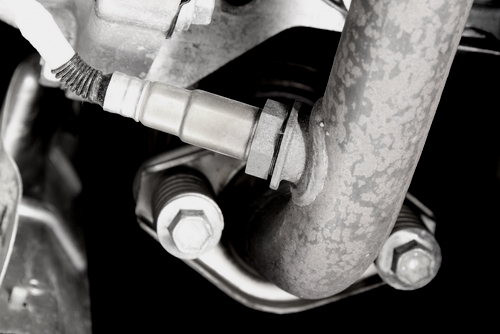 The board computer reports an error: After replacement of a catalytic converter the lambda sensor is often confused, as the previously stored values no longer apply. Generally this is not a problem and should solve itself after a few kilometres as soon as the sensors have adapted themselves. If engine control lights switch on, it might be something more serious, for example, one of the sensors not receiving any data at all. In that case the plug-in connections of the sensors should be checked. If this doesn’t help, only the garage can assist with a diagnostic device. The board computer reports an error: After replacement of a catalytic converter the lambda sensor is often confused, as the previously stored values no longer apply. Generally this is not a problem and should solve itself after a few kilometres as soon as the sensors have adapted themselves. If engine control lights switch on, it might be something more serious, for example, one of the sensors not receiving any data at all. In that case the plug-in connections of the sensors should be checked. If this doesn’t help, only the garage can assist with a diagnostic device.
|
| Water puddles under the car: Especially in the cooler months, condensation collects in the exhaust. If it is a real puddle apparently coming from the catalytic converter, the screw connection behind the catalytic converter is not sufficiently tight, allowing water to escape. Tighten the screws and check them all. This should solve the problem. |
| Bad engine performance: This error is also caused by sensors initially not receiving reliable values and this should solve itself during the first drive. If this doesn’t happen, possibly one of the sensors didn’t survive the replacement or the board computer must be reset. In this case, find a garage as quickly as possible. |




 (10 votes, average: 3.80 out of 5)
(10 votes, average: 3.80 out of 5)







